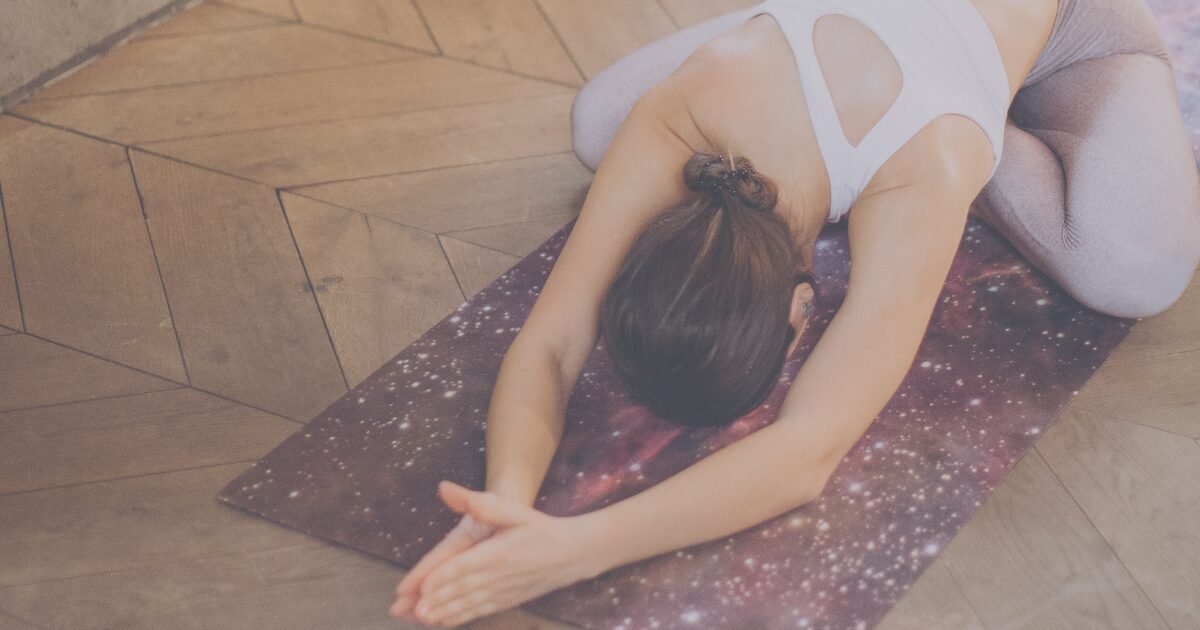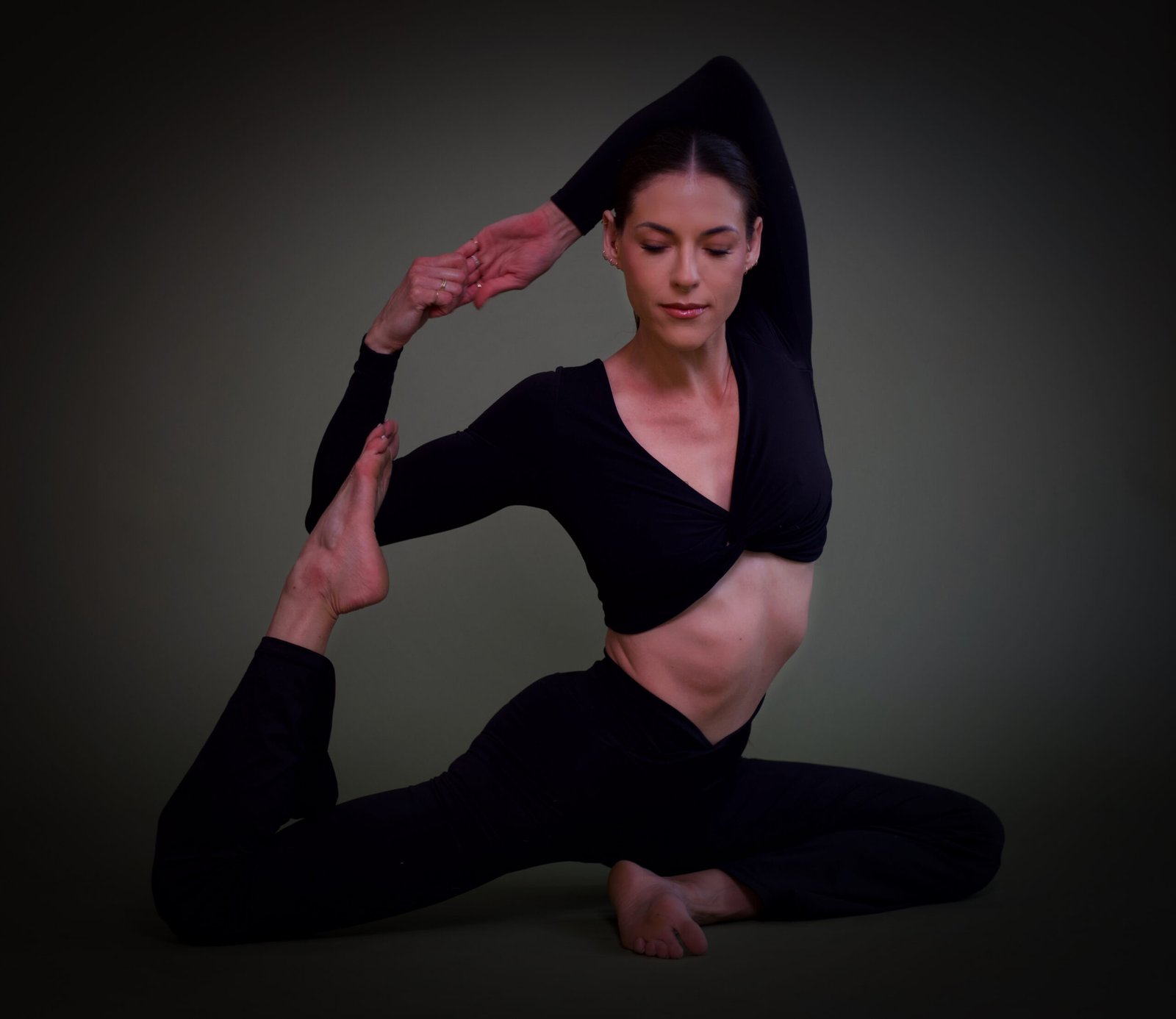
Restorative Yoga
A gentle, therapeutic practice that uses props to fully support the body in passive poses held for extended periods, allowing for complete relaxation, nervous system regulation, and deep rest that promotes healing, stress reduction, and restoration of physical and mental energy.

Description
Restorative Yoga is a gentle, therapeutic practice that uses props to fully support the body in passive poses held for extended periods, allowing for complete relaxation, nervous system regulation, and deep rest that promotes healing, stress reduction, and restoration of physical and mental energy.
Overview
- STYLE | Extremely gentle, passive, and nurturing; focused on stillness and support
- STRUCTURE | 4–6 supported postures per class, held for 5–20 minutes each with full prop support
- BREATH | Natural, effortless breathing; breath awareness deepens the relaxation response
- FLOW | Very minimal movement; transitions are slow, mindful, and integrated
- PACE | Ultra-slow; the focus is on complete surrender and ease in every moment
- FOCUS | Deep rest, parasympathetic activation, healing from stress or trauma, replenishing energy
- TEACHER ROLE | Grounded space-holder; ensures comfort, provides emotional and physical support, offers gentle cues
- VIBE | Calming, meditative, and cocoon-like; often described as "being held" by the practice
Benefits of Restorative Yoga
Rest. Restore. Renew.
Deep Release of Chronic Tension
Complete prop support allows muscles to fully let go, releasing patterns of holding and fatigue stored deep in the body.
Nervous System Regulation
Activates the parasympathetic nervous system, shifting the body from fight-or-flight to rest-and-digest mode.
Improved Sleep Quality
Regular practice helps regulate sleep cycles and creates deeper, more restorative rest at night.
Emotional Healing and Release
Safe, supported stillness creates space for emotions to surface, be witnessed, and gently released.
Enhanced Immune Function
Deep rest supports immune system recovery and strengthens the body's natural healing capacity.
Reconnection with Inner Wisdom
Stillness creates space to hear your intuition and reconnect with your body's innate intelligence.
Discover all 12 transformative benefits of Restorative Yoga
Explore All 12 Benefits →Restorative Yoga: The Art of Deep Rest and Nervous System Healing
Restorative Yoga is a sacred pause — a practice of conscious rest that invites the body and mind into a state of deep, supported stillness. Using props such as bolsters, blankets, blocks, straps, and eye pillows, the body is carefully positioned and held in passive postures for extended periods of time — often 10–20 minutes each.
Unlike Yin Yoga, which targets the fascia and connective tissues through stretch and tension, Restorative Yoga uses no muscular effort at all. Every aspect of the body is supported, allowing the practitioner to completely let go. In this space of stillness, the parasympathetic nervous system (rest-and-digest mode) is activated, and the body's natural capacity for healing is amplified.
It is not uncommon for practitioners to feel emotions arise, drift into sleep-like states, or experience profound clarity and peace. Restorative Yoga is both radically gentle and deeply transformative.
Origins of Restorative Yoga
Restorative Yoga has its roots in Iyengar Yoga, where teacher B.K.S. Iyengar developed the use of props to support healing and precision. The practice was further refined and popularized by Judith Hanson Lasater, who emphasized the importance of rest, surrender, and the body's ability to heal when fully supported.
Restorative Yoga emerged in response to the high demands of modern life, offering a counterbalance to overstimulation, stress, and depletion. Today, it is widely practiced in therapeutic settings, trauma-informed spaces, and yoga studios around the world.

Style and Structure
Style
Restorative Yoga is quiet, non-effortful, and deeply internal. Poses are held in complete stillness, with no stretching or activation. Every part of the body is fully supported so that muscles can relax, breath can deepen, and the mind can quiet.
It is the yin of yin, and a practice of radical non-doing.
Structure
A typical Restorative class includes:
- Opening grounding practice (often breath, intention, or a short meditation)
- 4–6 postures, each supported with bolsters, blankets, and props
- Gentle breath awareness or guided relaxation
- Long savasana or yoga nidra-inspired closing
Common poses include:
- Supported Child's Pose
- Reclining Bound Angle (Supta Baddha Konasana)
- Legs Up the Wall (Viparita Karani)
- Supported Twist
- Reclined Heart Opener

Breath and Flow
Breath
Breath in Restorative Yoga is:
- Natural, soft, and unforced
- Often deepens over time as the nervous system settles
- Used to guide awareness and relaxation rather than to energize or direct movement
- May be accompanied by counting, visualization, or gentle cues
Breath is not a tool for effort — it is a portal to rest.
Flow
Flow is experienced as a slow unfolding of inner states — from tension to ease, from doing to being. There is no choreography or dynamic sequence. Movement between poses is intentional, quiet, and mindful.
The entire class is designed to feel like one extended exhale.
Pace, Focus, and Teacher Role
Pace
Restorative Yoga is the slowest of all yoga practices. Poses may be held:
- For 5–10 minutes in beginner-friendly classes
- Up to 20–30 minutes in advanced or therapeutic settings
There is ample time between shapes for integration, adjustment, or simple stillness.
Focus
The core focus is:
- Activating the parasympathetic nervous system
- Providing safe, supported space for rest and emotional release
- Facilitating healing from injury, trauma, fatigue, or stress
- Cultivating inner presence, awareness, and trust
This is not about flexibility or progress — it's about allowing what's already within you to surface and settle.
Teacher Role
Restorative teachers are:
- Space holders, not directors
- Trained to observe subtle cues of discomfort, effort, or emotional activation
- Masters of prop placement and energetic presence
- Often incorporate poetry, soft music, or silence
- Attuned to trauma sensitivity and individual needs
The best Restorative teachers are both seen and unseen — present without intruding.
Vibe and Community
The vibe in a Restorative class is:
- Quiet, dimly lit, and sacred
- Warm, welcoming, and inclusive
- Emotionally safe and deeply relaxing
- Like a retreat into yourself, where nothing is expected but everything is welcome
Community tends to be gentle-hearted and grounded in mutual care and slowness.
Who Is Restorative Yoga For?
Ideal for:
Recovery from Injury or Burnout
Those recovering from injury, illness, or burnout.
Navigating Grief or Stress
Anyone navigating grief, stress, or emotional fatigue.
Anxiety & Insomnia
Individuals with anxiety, insomnia, or trauma history.
Deep Connection
Students craving deep rest and inward connection.
Caregivers & Healers
Yoga teachers and healers needing replenishment.
Less suited for: Those seeking active, physically intense movement (though Restorative is the perfect balance to that practice).
Conclusion
Restorative Yoga is a sanctuary of stillness, a sacred invitation to rest, restore, and reconnect. In a world that rarely allows pause, this practice becomes revolutionary — a radical act of trust, surrender, and healing.
It asks nothing of you but your willingness to be held — by props, by breath, by presence. And in return, it offers you everything.
This is rest as medicine.
And every exhale becomes a homecoming.
Explore Related Yoga Styles
If you are drawn to Restorative Yoga's healing stillness but wish to invite deeper release, Yin Yoga offers longer holds that open connective tissues and energetic pathways. If you feel ready to transition from rest into gentle strength, Hatha Yoga provides a balanced and accessible way to reawaken movement. For those seeking alignment and structure, Iyengar Yoga uses props with precision to support both therapy and exploration. If spiritual awakening calls, Kundalini Yoga combines breath, mantra, and movement to stir energy and expand awareness. And if fire feels like the medicine you need, Hot Yoga or Power Yoga provide dynamic, sweat-filled counterpoints to Restorative's softness.
Each of these practices balances the whole — reminding us that healing comes not only from effort, but from rest.
Share This Article
Find Restorative Yoga Near You
Connect with restorative yoga studios and experienced instructors in your area dedicated to deep rest, nervous system healing, and transformative practice.

Restorative Sanctuary
Therapeutic yoga with trauma-informed teachers. Weekly restorative classes and private healing sessions.
Learn More
Rest + Restore DTLA
Cozy studio specializing in deep rest practices. Props provided, candlelit ambiance, and supportive community.
Learn More
Stillness & Healing Studio
Expert instruction in nervous system regulation and trauma-sensitive yoga. Specialized props and modifications.
Learn MoreReady to Discover Deep Rest?
Find experienced Restorative Yoga teachers and studios near you. Browse verified classes, read reviews, and book your first healing session with confidence.
Find Classes Near You